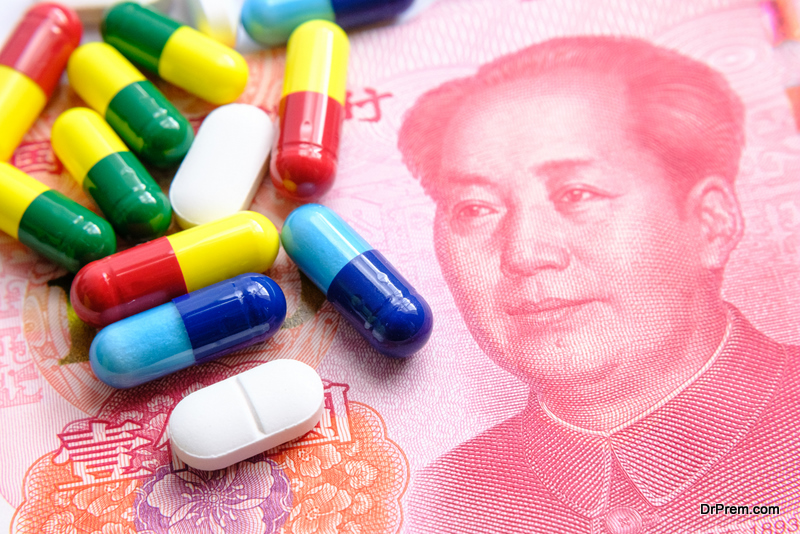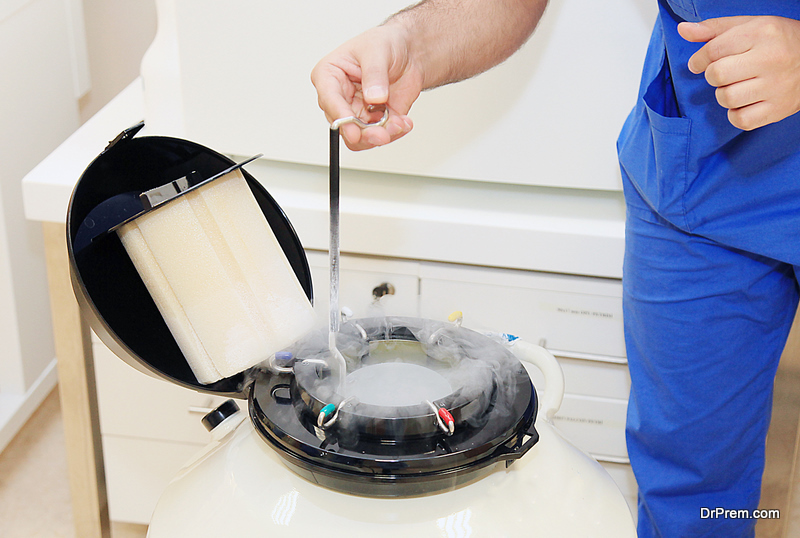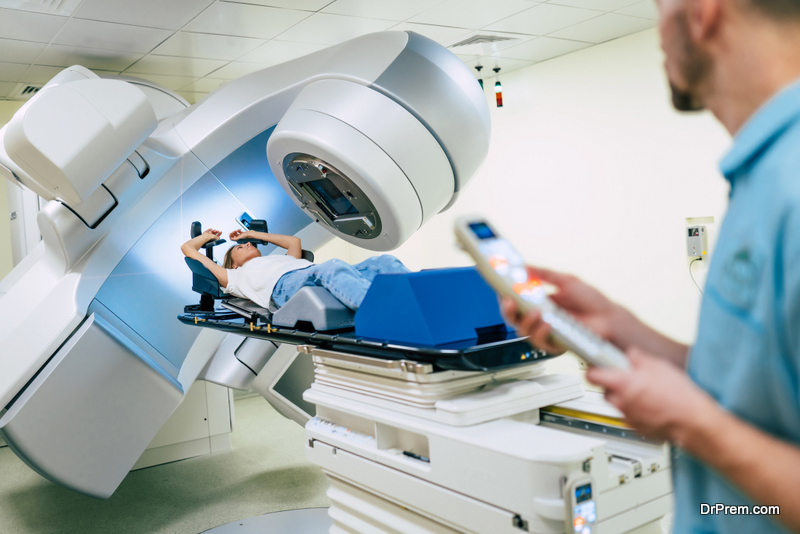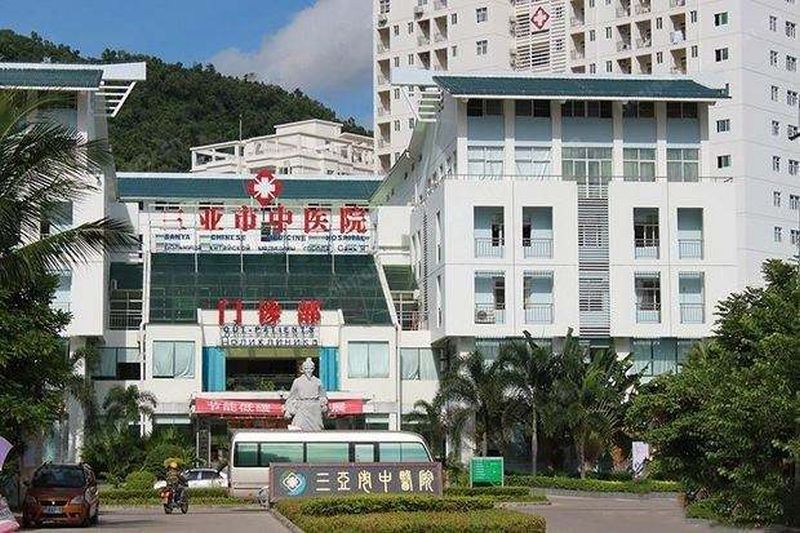Medical tourism in China presents an interesting scenario. Does it favor inbound or outbound medical tourism? China has gained reputation as one of the prime source countries for medical tourism since last few years where half a million to 1 million well-heeled Chinese make international trips for medical purpose.
But a reverse trend is also catching up fast. Nearly one million foreign travelers visit China seeking various medical treatments including Traditional Chinese Medicine. Millions travel within China for medical purpose.
The government has realized the economic impact of inbound medical tourism and has allocated a special zone for medical travelers in Hainan which is seeing a rising inflow of medical tourists. The indications are good enough that China is growing in inbound medical tourism as well.
Guide to Medical Tourism in China – Facts, Trends, News, Services, Research, Business and Updates by Dr Prem
-
Medical tourism in China – Trends and developments
-
Location
-
People
-
Events
-
Weather
-
Growth of medical tourism in China
-
Healthcare system
-
Quality of Healthcare
-
Trend of medical tourism in China
-
How China is developing as a medical tourism destination
-
Reasons behind the Growth of Medical Tourists in China
-
Increasing Popularity of Medical Tourism among Chinese People
-
Needs of Aging Population
-
Preferred Destinations for Medical Tours
-
Affluent Class as Medical Tourist
-
China to position as a global medical tourism leader among its peers
-
Some facts about China Outbound Medical Tourism
-
The behavior of Chinese travelers facilitating outbound medical tourism
-
Rising infertility driving outbound medical tourism in China
-
Favored Destinations of China Medical Tourists
-
The United States of America
-
Seattle
-
Boston
-
Los Angeles, New York and Cleveland
-
Japan
-
Korea
-
Germany
-
Britain
-
Singapore
-
Australia prepares to welcome medical tourists from China
-
The untapped potential in inbound medical tourism
-
Ground-breaking stem cell treatment facilities to support inbound medical travel
-
Provision of vaccination programs
-
Traditional Chinese Medicine (TCM) -the strongest pillar of inbound medical tourism
-
Inbound medical tourism in China gets a push as more Russians look for TCM
-
Developing medical infrastructure
-
Hospital network drawing more medical tourists
Medical tourism in China – trends and developments
China has been a prime destination for travelers seeking alternative, traditional Chinese medicine for years now. The world’s most populated country has a number of private institutions catering to foreign patients and public hospitals that have specially designated international patient departments. Huge government investments to revamp medical facilities for the highest level of care has placed China as a renowned medical tourism destination.
The possibility of combining wellness and medical trip with excellent medical facilities and traditional Chinese medicine therapies is attracting patients. China is also a pioneer destination in stem cell research and therapies. This could prove to be extremely helpful for individuals whose home country bans the use of experimental stem cells.
Flaunting one of the oldest cultures and civilizations in the world, China is a great contributor to some of the basic essentials of day-to-day life. China faced a lot of turbulence due to civil war that lasted until 1864, foreign interference and Japanese invasion. After long turmoil, China finally became the People’s Republic of China on October 1, 1949, when the Communist Party took control of the nation.
Location
Located in the eastern part of Asia, the People’s Republic of China is surrounded by Pacific Ocean in the east. Surrounded by Vietnam, Laos and Burma in Southeast Asia, India, Bhutan, Nepal and Pakistan in South Asia, China shares its borders with Afghanistan, Tajikistan, Kyrgyzstan and Kazakhstan in Central Asia, Russian Altai and Mongolia in Inner Asia and North Korea in Northeast Asia.
Featuring the longest combined land border in the world, which measures 22,117 km (13,743 miles), China shares its border with 14 countries. With an area of 9.6 million square kilometers, China covers almost one-fifteenth of the world’s land mass and is the third largest country (area wise) in the world after Canada and Russia.
People
With a population of over 1.4 billion, China is the most populous country in the world. Due to the cheap labor in China, the economy of the nation is growing rapidly, as many hardworking individuals work in several industries contributing to the rapidly increasing economy.
China revolutionized its education system in 1980s, as it started following the western standards of education to increase the number of skilled employees or laborers in their offices and industries. Furthermore, Chinese people are very friendly and pay a lot of respect to their rich culture and heritage.
Events
Like most other Asian countries, Chinese people cherish their traditional and cultural values and participate actively in their time-honored festivals. A number of old and modern fairs and events, based on both lunar and solar calendar, take place in China throughout the year. These festivals and events bring people of different sects and societies together, while propagating the rich cultural heritage and old traditions that prevail in China from ages.
Weather
Weather or climate in China is either dry (especially in winters) or wet in summers or monsoons. Lying between latitudes 18° and 54° N and longitudes 73° and 135° E, the landscape and climate in China differ from region to region due to highly complex topography of the country. The southern part of China lies in the tropical and sub-tropical zones, while the northern part lies in the frigid zones, causing huge difference in winter and summer temperatures across the nation.
The northern part of Heilongjiang province has long winters but no summers. On the other hand, the Hainan Island has long summers without winters. Tourists can enjoy spring all round the year in the southern part of the Yunnan-Guizhou Plateau. The temperature in tundra zones like Qinghai and Tibet remains very low all through the year.
Growth of medical Tourism in China
China has been a prime destination for travelers seeking alternative, traditional Chinese medicines and therapies for years now. A number of private institutes in China employ traditional methods of treatment, which are very popular among foreign tourists. China is investing heavily in its hospitals and medical industry to promote medical tourism and attract foreign tourists seeking treatment.
Healthcare System
The communist government of China provides funds and healthcare facilities. The healthcare system is divided in various sub-systems, such as medical services, preventive care, primary/public health, drugs and medical equipment, to promote better health services in the country.
As China is becoming a capitalistic market, several private clinics and hospitals provide best medical facilities for domestic and foreign patients who are willing to pay more. China may lack an official private healthcare system, but you can find a number of private doctors or practitioners who provide exclusive healthcare services.
Quality of Healthcare
Almost all the healthcare facilities in China are under government control; therefore, local and state authorities ensure that the hospitals and clinics are in good shape and offer quality services. You would find physicians with years of experience and the latest medical equipment in Chinese hospitals.
49JCI accredited hospitals in China provide high quality medical facilities to both domestic and foreign patients. In fact, the 2008 Beijing Olympics brought about a revolution in the Chinese healthcare system, as the country provided best healthcare facilities to a vast number of foreign travelers who visited China to support their country in the mega sporting event.
Trend of Medical Tourism in China
There was a time when medical tourism used to be considered as something very exclusive, as in which could be only availed by the affluent people. Now China offers medical facilities at affordable prices, so swarms of people visit China every year in order to avail healthcare at affordable prices and to cure their ailments through traditional Chinese medicines. Still a large number of affluent Chinese people prefer going to other developed countries for their treatment.
Wealthy Chinese people fly off to other countries as medical tourists in order to seek high-end treatments. Such countries are doing their best to serve these medical tourists and give them maximum comfort. Korean tourism organization revealed some data stating, around 400,000 medical tourists visited South Korea for getting a plastic surgery done, and most of them were Chinese.
For anti-aging therapies, cancer treatments, deliveries, and chronic diseases cured, increasing number of Chinese people are visiting countries like US, Singapore, Malaysia, Thailand, and Europe. According to the Shanghai Tourism Products and Promotion Platform, around 60,000 Chinese people have sought medical services abroad in recent years.
What gives impetus to medical tourism is the growing aging population. As a person grows old, some or the other health problem surfaces, and to get rid of those problems the services of a hospital are sought. With age people’s spending on medical service also increases. This is the reason why majority of medical tourism destinations make their hospitals and train their staff to treat the aged gentry with utmost care. Some hospitals in Germany also provide prayer rooms, dormitories for relatives, and the menus of thepatients’ liking to the medical tourists. Catering to the special needs of medical tourists is one of the prime trends ofMedical tourism in China.
Chinese medical tourists differ from the medical tourists belonging to other countries like US and Europe. Patients from US and Europe travel to other countries when they find the same treatment to be cheaper in other country, as compared to their own country and they all go on commercial insurance expense. However, Chinese patients travel to other countries as medical tourists when they are in search of high-end medical services abroad and majority of them pay their own bills, no insurance.
The level of medical tourism in China is still in its infancy. Major reasons behind this situation are the stringent rules and regulations laid by the Chinese government. If the government becomes lenient on the requirements and build a medical certification system acceptable to the entire world, China can itself grow into a major medical tourism destination.
To reverse the outbound healthcare related travel, Hainan, the smallest island province in South China is fast coming up as an attractive medical tourism destination. Exotic beach resort and mindblowing naturescape promise a great medical and wellness vacation for travelers.
How China is developing as a medical tourism destination
Even though China has not been able to make a strong position among some popular medical tourism destinations, it has been desirous of jumping into the scene. There are several hospitals in top Chinese cities that have already been serving medical tourists, implementing many new Medical tourism in China trends. However, it is still unclear if other provinces would also follow the footsteps of these cities.
Among various leading medical tourism destinations, it is interesting to see how China would make its mark. In the past, China had only been famous for its Traditional Chinese Medicine (TCM) and grey-market organ transplants that had been officially outlawed. With alternative medicines picking up in Western countries, TCM is also an area of interest. However, in the past, China has received bad name for its hygiene issues, irregular industry regulations, fake advertising claims and less-qualified medical practitioners.
Today, the situation has altered widely. China has developed high-class medical facilities to cater exclusively to medical tourists. There are qualified caretakers, advanced facilities and latest medical equipment to support its medical tourism efforts. It has created a dedicated medical zone on Hainan Island that is spread over an area of 200 square kilometers.
Any medical joint ventures with foreign institutions are free from the share ceiling. The cost of the treatments is also kept competitive. There are dedicated medical facility websites that provide information on treatment cost comparisons with countries like America. These websites also display important information on China’s infrastructure, budding destinations, and healthcare facilities.
There are almost all types of procedures performed by specialists. These procedures range from cardiovascular to cosmetology. An advantage that medical tourists would find in China is to combine their business with travel. There are several great relaxation spots in China that could support the healing process for patients.
Medical tourists can have an extended holiday in China when they come for treatments. They can enjoy the beaches and mountains in China where spa treatment is also provided. You can find a combination of Eastern and Western medical practices in China. To overcome the hygiene issue, patients generally carry their own disposables. With all these advantages and challenges, it is important to see how China makes its position stronger as a medical tourism destination.
Reasons behind the Growth of Medical Tourists in China
China is also experiencing a spurt in the number of foreign patients, coming to the country for some of the conventional treatments or look for solutions of various ailments using traditional Chinese medicine.China’s emergence as one of the top leading healthcare providers has been dramatic. Affordability and accessibility are two big factors pushing inbound medical tourism in China. The country has well-established airlinks with rich and developed countries as Chinese tourists occupy a lion’s share in the global travel market. This has made travel more convenient until the pandemic led to a screeching halt.
Increasing Popularity of Medical Tourism among Chinese People
Many rich Chinese are flying out to destinations in Europe as well as Asia for various medical and cosmetic treatments in addition to health checkups. The reason for this is the extended waiting time in many of the Chinese hospitals and lack of many of the specialized services.
According to estimation, more than sixty thousand Chinese citizens opt for medical tourism aimed at treatments such as cancer screening, anti aging therapies and healing chronic diseases. One of the other reasons for this increase in Chinese medical tourist is the aging population, which is demanding better health facilities even if the costs are higher.
Needs of Aging Population
As per medical tourism in China statistics, the number of people aged sixty or more is about 14% of the total population and this figure was only about 10% in the year 2000. This clearly highlights the fact that the number of senior people is increasing in the country but adequate facilities are not present in the country to meet their health requirements.
Preferred Destinations for Medical Tours
Some of the nearby destinations are favorites such as Singapore and Taiwan while many are willing to travel further for anti aging procedures in Switzerland to chiropractic treatments in Germany, cancer screening in Japan and cosmetic surgeries in South Korea.
According to recent reports, Chinese have ousted Americans and become the largest set of medical tourists coming to South Korea. The percentage of Chinese medical tourist in South Korea is close to 20% while the US citizens comprised 19.2% of total number of medical tourists coming to the country.
Affluent Class as Medical Tourists
Most of these medical tourists are middle-aged entrepreneurs who are willing to spend several thousand Yuan for consultation as well as treatment in foreign countries. If we look at the figures, people with in excess of $1 million to spend increase by about 1.6% last year and another interesting fact that came out of a recent report suggest that around seventeen percent of Asian millionaires are Chinese.
China to position as a global medical tourism leader among its peers
Thailand has emerged as the leader in the medical tourism in Asia over the last two decades. But China may be all set to steal the top spot away from its south-western neighbor.
Globally, around 6 million patients undertake medical tourism to receive cheap or better healthcare abroad. Growing at an annual rate of 20-30 percent, the sector currently generates approximately USD100 billion in revenue for medical tourism destinations around the world. Asia draws roughly 80% of all medical tourists in the world and Thailand alone is responsible for drawing 40% of the medical tourists visiting Asia.
However, medical professionals in China believe that due to their advantageous healthcare prices, the country can easily overtake Thailand as the top provider of medical tourism in the region and create better medical tourism business opportunities. And to show the seriousness of its intentions, China established the Shanghai Medical Tourism Products and Promotion in 2012 that brought together 20 participating hospitals in the city though the company running the platform claims that has been receiving up to 100 inquires a month since the establishment of the platform.
One of the platform’s initiators Shanghai East Hospital treats 50,000 foreign patients a year though it remains unclear whether they can be dubbed medical tourists in the correct sense of the word.Much depends on medical tourism facilitator directories provided the data uploading are regular and authentic.
To give its medial tourism sector a boost, China plans to set up a special zone for medical tourism in Hainan Province that would attract tourists by offering modern treatments along with Traditional Chinese Medicine therapies including cupping and massage therapy and acupuncture.
However, one of the primary challenges for the country’s medical tourism industry would be to first retain the 60,000 Chinese medical tourists that travel to Thailand, India, South Korea and Singapore for medical treatment each year before it can even begin to call itself a world class medical tourism destination.
Another key consideration for the Chinese medical tourism industry would be to ensure that the basic healthcare of the Chinese population is not jeopardized by pulling resources away for high-end form of healthcare.
For the time being, it seems like Thailand’s position as Asian, and indeed global, leader in medical tourism remains unthreatened though the Chinese government does have a reputation for pushing reforms through incredibly quickly whenever an increase in revenue is on the line. However, china will also have to reform its immigration and tourism policies to make it easier for travelers to enter and leave the country before it can make a dent in Thailand’s medial tourism industry.
Some facts about China Outbound Medical Tourism
The following facts can be of immense benefits for a medical tourism facilitator or medical tourism consultant:
- Japan is favored destination for health checkups and cancer screening.
- In case of cancer treatment, according to medical tourism in China statistics, the US is the place most preferred with cancer cure rate of about 65%, while it still is at 25% in China.
- For liver transplants and cosmetic surgery, outbound medical tourism in China data shows that UK and South Korea are the main destinations.
- To get placenta injection Switzerland is the favored destination.
- Eighty percent of Chinese medical tourists are cancer patients followed by patients looking for neurological and cardiac procedures.
- In case of middle class Chinese patients, the preferred destinations include Malaysia, Thailand, Singapore, Philippines and India where excellent facilities are available for affordable prices.
The behavior of Chinese travelers facilitating outbound medical tourism
If you ask any medical tourism advisor, Chinese are known to be the highest spenders in travel. Naturally, they have become the focus of international tourism market. While Chinese travelers, by and large, are keen to visit iconic locations and engage in lavish shopping, a tendency to avail medical treatments abroad cropped up lately creating one of the largest outbound medical tourism markets.
This is primarily owing to the lack of adequate medical infrastructure in the home country, exorbitant treatment and medication cost not to mention the frustrating waiting time. Therefore, clubbing pleasure and medical requirement in travel is no big deal for the Chinese with deep pockets. And the trend is growing.
The Global Growth Markets estimates that the number of Chinese medical tourists is likely to reach 900,000 by 2020 from the recent 500,000 spending minimum $10 billion per year. The global medical tourism market has never seen such a trend.
Asian destinations are preferred by a majority of Chinese medical travelers. For some rich and affluent people, the US and few European countries are more attractive. Medical facilities in the western destinations are perceived to be the best in the world by the Chinese population.
Interestingly, where availing low-cost treatments is the main lookout for medical tourists, this is not a factor at all for Chinese medical tourists. 1 million plus Chinese millionaires are willing to avail the best possible medical care irrespective of the cost for their near and dear ones.
Rising infertility driving outbound medical tourism in China
China’s poor fertility rate is turning out to be a great contributory factor to the country’s rising outbound medical tourism. As per the data from China’s State Statistical Bureau and other reports the country’s fertility rate stands 1.05, the lowest in the world. With about 500,000 overseas medical trips recorded by Chinese people in 2017, fertility treatment is one of the most sought after by them next to plastic surgery and anti-aging treatments.
According to 2019 GWI forecast, Chinese outbound medical tourists will be 1 million by 2020 with 900,000 looking for some sort of minor fertility and cosmetic procedures and 100,000 seeking advanced oncology and cardiology treatments.Well-known destinations can look for suitable medical tourism investment opportunities targeting this big Chinese travel market.
As estimated 45 million Chinese suffered from infertility problems in 2016, and the number is growing 100,000 per year as per China’s National Health and Planning Commission. China has been experiencing a declining birth rate since 1990s and now it has touched rock bottom with almost no signs of reversal.
China’s low fertility rate driven by social attitude
Not only the 30 year old one-child policy in China contributed to this decline but the prevailing social attitude where success oriented couples are not interested for more children also contributed significantly to this poor stats.
Changing lifestyle is a much greater cause contributing to the dropping birth rates. The majority of Chinese population in the mad race for success compromise with their lifestyle. Higher stress levels, smoking, drinking, and late marriage ultimately affect the reproductive health of people.
Female fertility drops from the age of 35 but careerist women go on postponing their pregnancy. Finally, when these couples get ready for conception, they struggle with a number of fertility issues.
China’s reproductive health market has the potential value of $15 billion
Post scrapping of one-child policy, the IVF consultation has jumped by 50%. Couples are considering for a second child, but for many it is too late because aging has taken its toll on their reproductive health. Medical tourism facilitators are in the lookout for suitable opportunities to tap this emerging potential in China medical tourism.
A significant drop in sperm count is noted from 100 million in the early 1970’s to 20 million in 2012 as per a senior fellow Global Health at the Council on foreign relations. Another study conducted in Central China in 2015 reveals that only 18% of men undergoing tests are found to be fit for sperm donation, a sharp drop from 56% as recorded in 2001.
For men, if it is the poor sperm health for women, it is the conception problem that is creating barriers in normal reproduction, and hence the growing need for IVF (In Vitro Fertilization) and other Assisted Reproductive Techniques.
So the only viable option is to go for assisted reproductive techniques. As per BIS research, China’s IVF market alone is expected to reach $1.5 billion in 2022 from $670 million in 2016. Chinese couples spend nearly $8 billion every year on IVF treatments as reported by Nikkei Asian Review of which more than $1 bn is done abroad. Reproductive medicine market in China seems to be lucrative with a potential value of $15 billion cites Bloomberg.
Inherent reasons favoring overseas fertility tourism
Overcrowded Chinese assisted reproductive care market:
China’s struggling healthcare system is greatly falling short in providing the right healthcare to nearly 1.4 billion Chinese population creating conditions good enough for outbound medical tourism.
Last year, about 500,000 overseas medical trips by Chinese were recorded as per Ctrip.com International among which the number of patients seeking infertility treatment abroad is quite significant.
The Chinese assisted reproductive care market is amidst chaos due to the overcrowding of patients and lack of proper infrastructure. Strict regulation in IVF treatments in China is further pushing patients beyond the border to seek infertility treatment.
For example, in China medically fit married/unmarried women are not allowed to freeze their eggs/embryos. On the other hand, women busy managing careers at young age are inclined to freeze their eggs to bear child in the future after marriage. Naturally, they look abroad for suitable facilities.
High Net worth Individuals (HNWI) opting for abroad fertility treatments swelling up the medical tourism crowd
IVF and assisted reproductive treatments are expensive and the success is uncertain. Still based on the spending power and better success histories, affluent Chinese are seeking abroad fertility treatments to expand their family or have their children as per their own convenient time.
The Chinese population has experienced an appreciable growth of High Networth Individuals last few years and they are not hesitant in spending while seeking fertility treatment abroad.
Couples with reduced chances of normal conception joining the crowd
With aging, the quality of sperms and egg fall drastically reducing the chances of conception. Millions of Chinese women around and over 35 years, eager to bring a second child are likely to face difficulty in conceiving in the normal way. Therefore, they will either have to join the long queuing list or look for beyond the border options.
Huge crowd and long waiting hours
Moreover, there would be young married couples as well looking for assisted reproductive technology to become parents. There isn’t enough supply back home to meet the sudden rising demand for fertility treatments. Due to this huge demand-supply gap, a couple may have to wait for more than one year for their turn of treatment which is frustrating enough. If budget permits, looking for beyond the border treatment seems more viable.
China’s track record in fertility treatments
In the past, China’s watchful control over IVF industry had heavy restrictions on gender selection. They demanded proof of marriage and birth certificates before a couple is allowed to have access to any kind of fertility treatment. Disillusioned by these stringent measures on birth regulations many Chinese had to look for greener pastures abroad.
Over the last twenty years, the country has experienced rapid growth in IVF technology. Needless to mention, fertility treatments have took a place among highly-demanded medical tourism procedures in the world. A number of fertility clinics have mushroomed in suburbs and big cities. Around one tenth of married couples needed the support of IVF techniques to bear a child.
According to a report released by the Chinese Health Commission of Women and children department, back in 2014, about 700000 women had undergone IVF treatments. The overall rush for all categories of fertility treatment has been on a frantic rise following this policy relief. Even traditional Chinese medicines to enhance fertility are much in demand.
The growth of domestic fertility clinics could not keep pace with consumer demand both in terms of infrastructure development and availability of talented fertility specialists who could effectively handle fertility treatment cases.
Lifting one-child restriction – would it lead to population boom?
According to a statement given by the National Health and Family Planning Commission, back in November, there is an estimated 90 million Chinese female who would be qualified for having a second child. This relaxed policy would help build an additional 30 million people who would become a useful backbone of domestic labor strength by 2050 to meet the ever rising industrial demand for manpower specially coming from the construction and manufacturing sectors.
The future extrapolations could however be a little utopian because a number of Chinese, especially from the younger generation would prefer to a small family and would be unwilling to bear the additional expenses on raising a second child.
Back in 2013, when there was a shift in policy in favor of having more than one child , the response wasn’t that overwhelming because many of the parents expected to be impacted by the policy were the only child themselves. So in reality, there were fewer births than were expected by the authorities.
China’s growing trend for beyond the border medical treatments:
Looking beyond the borders for better medical care has been the recent trend of the middle-income and high-income groups. In this scenario, Australia posting a high success rate in IVF treatments with minimum chances of multiple births has turned out to be the most favorite destination for Chinese couples seeking fertility solutions.
Reputed clinics in Sydney and Melbourne are offering scratch-to-end support without making the Chinese couples to wait for a long period. They are providing online and over-the-phone consultations elucidating the entire package and procedure. Their meticulous coordination reduces the waiting time of the couples as well as enables minimum clinical stay. Post treatment follow ups can be also carried out conveniently back home.
Well-heeled clients mostly prefer US, Europe and Australia while the middle income group prefers Thailand and Vietnam. The latter preference is mainly due to geographical proximity. Renowned fertility clinics in these countries receive about 30-40% patients from China.
A South California based reproductive center received about 250 patients with the average age of 39.5 in 2016 and the number is on the rise every year.Another reputed hospital in Thailand reported a 70% increase in Chinese medical tourists looking for assisted-reproductive services and anti-aging treatments in the first half of 2017.
The fertility treatment seekers are mostly women in their 30s and post relaxation of one-child policy, there has been sharp increase in the women patients aged above 40.Fertility treatments demand high-level of precision involving cutting-edge technology and is a very sensitive issue for the patients. These clinics abroad handle the problems of each Chinese patient uniquely with a personal touch reducing their waiting times and enhancing their comfort level.
Moreover, their success rates in IVF treatments are appreciable where many taste success in the first cycle of treatment itself. Most of these clinics have set up Chinese speaking staff to handle the requirements of Chinese fertility tourists.
Australia offering non-commercial surrogacy, US offering gender selection and egg freezing facilities and Thailand with lenient regulations in IVF treatments have turned out favorite destinations of Chinese travelers. Even for a physical examination of reproductive health, well-heeled Chinese are flying to Japan!
Favored Destinations of China Medical Tourists
Many wealthy Chinese are going abroad for their medical procedures, in a bid to avoid the noisy and over-crowded hospitals in mainland China. The factors influencing their decision is the specialist treatments available abroad and the cost, which they can afford.They are not seeking only one specific medical procedure but many including health screening and diagnosis. The waiting time is negligible in hospitals abroad, and for complicated surgeries and procedures, there has been and outflow of patients from China to various destinations around the world. Let’s take a look at the favorite destinations of Chinese medical tourists:
The United States of America
The US is known for its medical resources in the world, with its clinics and hospitals being ranked at the top for numerous diseases. This is one of the reasons why Chinese medical tourists favor the US, inspite of the 10-hour long flight. The patients also are recommended by their physicians in China to get the benefit of specialized treatment in the US. Apart from this, government run hospitals in China are short staffed and the facilities are also not suitable. Besides, medical facilities often charge wealthy Chinese extra, which means they end up with inflated bills.
Within the US too, there are some cities which see more of Chinese medical tourists, such as:
Seattle
Many Chinese people choose Seattle as they find the care given here to be much more personal and at the same time more professional, than in China. Wealthy Chinese people come here for their general medical check-ups too. They are willing to pay the high cost in return for the excellent services, along with the human touch. Facilities like water birth are also available here, which attracts young Chinese couples.
Boston
Boston is also a sought after destination, and a major Chinese medical tourism travel agency set up its offices in Boston, so that it could provide its clients with more on-site help when in the US.
Five top US hospitals have come up with a strategy to attract more Chinese patients by connecting and setting up affiliations with hospitals, medical travel agencies and physician groups in China.
Los Angeles, New York and Cleveland
Los Angeles’s weather, friendly culture and entertainment industry are some factors which attract Chinese medical tourists. San Francisco, New York and Los Angeles have a huge Chinese population which also leads to more tourists choosing healthcare facilities in these places.
Japan
Japan has the advantage of being closer to mainland China, and has seen a drastic increase in patients from China recently. Japan’s medical services are world class, and the cost is also much less than that in Europe or the US. Japan has a huge number of cancer patients from China due to the latest developments in Oncology. It also sees a number of Chinese medical tourists seeking treatment for heart disease.
Korea
According to Statista, the number of Chinese travelers visiting Korea for medical treatments in 2020 stood at nearly 30,000 making up the largest fraction of inbound medical tourists in Korea. In 2018, Chinese medical tourists accounted for about 31.2% of the total followed by those from the US and Japan.
Most of the Chinese medical tourists in Korea was in the internal medicine department. This was followed by cosmetic treatments, dermatology, fertility treatments and others. Quality and cost-effectiveness and lovely vacationing opportunities pose top attractions for Chinese medical tourists visit South Korea. Several relaxations in travel-related matters for Chinese also go in favor of Korea medical tourism.
Germany
Chinese like Germany as it has a reputation for being precise. Germany is well-known for its expertise in oncology, hematology and orthopedics, and for stem cell therapy, in which it has a lot of experience.
Britain
Liu Xiang, the retired Olympics hurdle champion from China, brought Britain into the limelight as a medical destination, after he availed of medical treatment at a famous London hospital. This created a surge in Chinese who sought sports medicine to come to London. It’s also a favored destination for Chinese patients who have been diagnosed with nerve and heart disease and cancer.
Singapore
Lion City Singapore is considered to be one of the finest Asian countries in medical technology and services. Chinese mainlanders prefer Singapore, because of its proximity to mainland China and also for the familiar cuisine of Singapore.
Chinese patients are flocking to other countries in search of better and specialized treatments, and willing to pay full price. Most medical tourists from China are wealthy people who can opt for treatment outside of China, but some people who require special attention or latest cures and medications which are not available in China also seek out treatment beyond Chinese horizons.
The US, Germany, Britain, Singapore and Japan seem to be the most favored destinations of Chinese people due to considerations like advanced technology, physician’s expertise, proximity and culinary preferences.
Australia prepares to welcome medical tourists from China
Coyiu has partnered with SunWo Medical Management to create an Australia/China partnership. Backed by Commonwealth Scientific and Industrial Research Organization, the partnership seeks to convert online medical opinions into medical tourists visiting Australia from China.
SunWo Medical Management is a premier company in China that provides medical tourism services. Under the partnership,Coyiu will share the medical expertise of its professionals with people in China through online consultations. The companies are hoping that these consultations will soon transform into people visiting Australia for medical procedures.
How the partnership will work
A Memorandum of agreement has been signed between Australia’s start-up company Coyiu backed up by CSIRO, and SunWo Medical Management from China. Under the proposed partnership, Coyui will provide medical consultations to patients via its audio/video platform.
The consultation will be in a high-definition form and, the companies hope, will result in catapulting the medical tourism of Australia. SunWo’sChief Operating Officer, Ben Chan believes that the increase in medical tourism will happen automatically when patients get a more comprehensive idea of their treatment.
Australia hopes to extend its expertise in cardiovascular disease, cancer, respiratory diseases and diabetes to medical tourists from China.
Australia has incredibly talented medical professionals. The country’s medical specialists are especially skilled in fields of cancer research, respiratory diseases, cardiovascular diseases, Alzheimer’s disease. China currently has a high rate of heart diseases. More than 230 million Chinese suffer from some form of aheart ailment and over 3 million deaths each year are documented from this disease. This is one of the many areas that Australia will be able to benefit patients from China.
Currently, China has outranked all the countries in terms of cases of lung cancers diagnosed each year and deaths from the disease. Air pollution in the country is on such a rise that it has replaced smoking as the chief cause of lung cancer in China. It has been predicted that China could expect 800,000 annual diagnosis and 700,000 deaths annually from the disease by 2020. Patients will be able to benefit from lung cancer treatment options from Australia via strategic partnership.
China has a high number of cases of Alzheimer’s. According to latest figures, 50 million patients of dementia are present in the world. Out of these 10 million are found in China alone. This is a cause for concern in the country, especially because China also has the highest number of undiagnosed cases of dementia. These patients can draw benefits from the various research-based treatments currently going on in Australia.
Australian medical and insurance agencies for Chinese visitors
Because of the rise in medical tourism between Australia and China, many medical and insurance companies from Australia have been visiting the embassy in China. In the hope of tapping into the huge market of medical tourism, these agencies will be providing medical cover to Chinese medical tourists . This is being done to initiate a two-way medical tourism that will benefit both countries.
Australia is home to two of the world’s leading medical device manufacturers. ResMed and Cochlear are both companies with groundbreaking innovations in medical devices; their only shortcoming is in marketing. Because of poor commercialism, their products fail to survive in the global market. A partnership between China and Australia medical tourism can also give this industry the push that it needs. Under the China-Australia free trade agreement, this sector will see a well-deserved boost.
Australia and China have recently joined hands and formed many new agreements. The biggest is the partnership between the two countries over medical tourism. Lastly, the Open Sky agreement signed between China and Australia couple of months back opened up a more convenient travel route for the Chinese travelers. Launching of non-stop flights between Sydney and major cities of China in 2017 would see more Chinese tourists flocking the Aussie clinics for fertility solutions.
The untapped potential in inbound medical tourism
China’s ranking as a globally popular tourist destination is very high. The country is safer than other Asian countries and is the fourth largest country for inbound tourism. According to the Chinese National Tourism Administration (CNTA), the country is contemplating integrating health and tourism that would help in fulfilling the nation’s strategy in industrial development.
A number of private and public clinics with state-of-the-art facilities are handling a good number of foreign patients. JCI accreditation of medical facilities is on the rise with more than 77 accredited facilities providing favorable grounds for medical tourism.
Expert Integration of Traditional Chinese Medicine and sophisticated western medicine by some leading hospitals poses another great attraction for foreign travelers. China is well known for specialized treatments in cardiology, orthopedics, neurology etc. The treatment cost is 80% less than those provided in the US.
Ground-breaking stem cell treatment facilities to support inbound medical travel
The country is home to some of the ground-breaking stem cell treatments which are still at the experimental stage or awaiting approval in developed western countries. The Bao Lechung International Medical Tourism Zone in Hainan gets the first affiliated stem cell hospital set up by the China Stem Cell Group Co Ltd.
The hospital expected to handle 1000 blood stem cell transplantations every year could make up for the shortage of transplantation resources in China. Given the completion of all the allocated projects in the coming five years, this zone is expected to receive 5 million tourists every year.
Provision of vaccination programs
According to medical tourism in China statistics, of 600,000 outbound Chinese travelers seeking abroad medical treatment in 2017, a considerable fraction sought Gardasil 9 vaccination to prevent cancers caused by HPV (Human Papilloma Virus).
The vaccination, recently introduced in the Lecheng Pilot Zone of Hainan has provided relief to many who would prefer domestic vaccination instead of taking the stress of abroad travel. The hospital is also providing specialized care for many treatments unavailable in mainland China.
Traditional Chinese Medicine (TCM) -the strongest pillar of inbound medical tourism
The tropical island of South China, Hainan has been a prime attraction for Russian medical tourists seeking TCM treatments to get relief from chronic pains and other disorders. Since last 7 years, the island province has welcomed 800,000 Russian medical travelers majority seeking TCM and others looking for wellness enhancing programs to remain fit physically and mentally.
According to experts, Traditional Chinese Medicine can be integrated effectively with Western medicine in treating advanced forms of tumor. This can be more effective in patients not responding well to post-surgery chemotherapy sessions.
Read More About Medical Tourism Development in Hainan
Inbound medical tourism in China gets a push as more Russians look for TCM
Image Source : en.hnftp.gov.cn
Traditional Chinese Medicine is bringing in cheers to the country’s inbound medical tourism in a scenario when half a million Chinese travelers are flying abroad for medical treatments. It is the Russians who are building a bond with TCM; thanks to Sanya’s TCM hospital located at the southernmost tip of Hainan Island serving abroad medical tourists to their utmost satisfaction.
It all started with the introduction of Healthcare Tourism efforts that took off in 2002. Since then, it has been the favorite of Russians. In the past seven years, this island province welcomed 800,000 Russian tourists and 80% of them tried some form of TCM during their vacationing period.
The popularity of this destination among Russians is such that adverts are displayed in the Russian language. Many therapists are also devoting hours to master this foreign language to communicate better with the Russian patients.
This particular destination, nurtured exclusively to support China’s inbound medical tourism, have successfully treated 50,000 medical travelers mostly from Russian speaking countries. Others were from Northern Europe, United States, Canada, Turkey and Iran.
Even noted Russian dignitaries including the Kazakh President, the Russian Prime ministers and other dignitaries from 18 countries have availed TCM from the reputed Sanya TCM hospital.
The Russian bonding with TCM:
The Russians’ love for TCM is not new. It started during the 17th century after the signing of the first treaty between Russia and China in 1689. Russian medical experts started taking interest in the 5000-year-old TCM and even travelled China to learn about vaccination and advanced acupuncture techniques.
In spite of this, Russian medical experts could not achieve that high standard of practicing TCM primarily due to language barrier and other infrastructure problems. The medium of transport in the past was also not that developed. Moving through the long stretch of kilometers to the south towards China along freezing cold climate and vast treacherous terrains and steppes was not only challenging but quite punishing as well.
Despite these facts, traditional Chinese medicines and their myths continued to lure the Russians to break the distance barrier and procure the medicines which drew them all the way from the Siberian north.
The Russians are still in a frantic quest for the traditional Chinese medicines given the fact that travel has become easier. Practically, it won’t take much time to drop into China from Moscow or other Russian cities as would it take to reach London or Paris from Russia.
The efficacy of TCM in treating people of particular geographical locations:
The principles of TCM are deep rooted that primarily aims in energy balancing. The vast expanse of this traditional mode of treatment covers almost each and every ailment simple or critical.
But for people residing in extreme climatic conditions like extreme winters of Siberia and Canada are prone to specific nerve diseases, respiratory problems, problems in joints affecting the normal mobility for which TCM is very effective.
Naturally, to avoid expensive drugs or the surgeon’s scalpel, these patients are willingly traveling to this part of China to access the much favored TCM as well as enjoy the bright tropical climate. Most importantly, these travelers are happy customers and some of them do make repeat visits.
Growing popularity of TCM:
Currently, in China, traditional Chinese medicine is very much in vogue as is the modern medical treatments in spite of the disputes raised by the western world. Many western scientists and medics have ruled out traditional Chinese medicine as a product of pseudoscience but that didn’t deter this traditional medicinal system gain widespread popularity.
It would also be not out of the place to mention that many US universities have started researches on TCM based herbal medicines to improve the efficacy of chemotherapy. The FDA has also approved the use of the compound arsenic trioxide, traditionally used in TCM for treating leukemia.
China has realized that the growing healthcare cost most of which shoot beyond the insurance coverage and wellness awareness are drawing people to adopt alternative treatments. TCM, being one of the enriched ancient medical systems, grabbed the attention of the western world with its proven efficacy. Ultimately, it is the cure from ailments matters more for the patients than the treatment mode.
TCM is recognized to such an extent that Russian medical experts are willing to conduct clinical and research work in this region. The region is also attracting other overseas agents and companies willing to develop a strong business network.
Encouraging TCM in medical schools:
The China government is also promoting teaching TCM in university hospitals where conventional medicine is taught. For example, the students of China Medical University Hospital in Taichung, Taiwan, patients receive traditional TCM treatments along with the conventional medical treatments.
This is an effort way apart where complementary and alternative medicines are not included in the university curriculum. Surprisingly, about 50% of TCM practitioners in Taiwan are graduates from this university who have spent at least 8 valuable in honing both conventional medicine and TCM practicing skills.
Enforcement of regulations to add credibility to TCM:
With an aim to regulate the practice of TCM, the China government has established a national law from 1st July, which will curb the malpractices. Few more regulations are in the pipeline to be released in the next couple of months. These are aimed to standardize costs, safety measures and service quality.
Hainan is a special project of China reserved exclusively for promoting medical tourism by providing state-of-the-art medical facilities and popularizing its indigenous TCM. Therefore, new regulations will enhance the importance of TCM in global tourism sector and invite international cooperation.
It is clear enough that China is thinking a long way with the juxtaposition of traditional and advanced medical treatments to create a unique experience for the future medical tourists stepping into this country.
Developing medical infrastructure
China being one of the most technologically advanced nations in the world is fast advancing its healthcare infrastructure. International departments are being opened in leading hospitals which is seeing a growing number of abroad medical patients.
Since the beginning of 2015, the Xinjiang People’s Hospital has handled almost 6000 medical patients from Central Asia of which there were 305 hospitalization cases. Lately, Hainan’s capital city Haikou saw the opening of the state-of-the-art 1200 bedded cancer hospital costing $426million, which is a private-public partnership venture.
The Sixth Affiliated Hospital of Xinjiang Medical University at Urumqi saw a good number of abroad patients within months of opening the international department with language support facilities.
Sensing a huge demand for orthopedic services from across the border, the hospital also plans to build an Asian Orthopedic Center. A proposal has been undertaken to build 10 model TCM health tourism zones by 2020 that will offer advanced treatments and recuperation programs, wellness programs and elder care.
Hospital network drawing more medical tourists
The Shanghai-based Winning Health Technology Group Co along with health commission has set up a unique network connecting 19 hospitals in Urumqi, 17 hospitals in Kyrgyzstan, 7 in Kazakhstan and 2 in Georgia to promote inbound medical tourism.
It is further aiming to promote the platform to 40 more medical institutes in Xinjiang and include 100 more hospitals across Central Asian cities. This has facilitated a two-way communication between the patients of the source country and the destination country (China) by sending the necessary patient details prior to consultation.
This consultation provided free of cost ensures a smooth process for the patient to plan for medical tourism. The platform also provides other services like flight bookings, airport pickups, accommodation booking including arranging city tours.
While China’s outbound medical tourism seems unstoppable, the country is also looking forward to tapping its potential in inbound medical tourism through concerted promotional efforts in coordination with ministries of travel and tourism and finance.
Opportunities for foreign investment in China’s outbound and inbound medical tourism
As China faces new challenges from a growing population that suffers from lifestyle diseases, such as heart disease, cancer and other diseases, more and more Chinese are leaving for treatment overseas. China accounted for 26.9% of cancer deaths globally, approx 2.2 million, and WHO estimated that 230 million Chinese suffer from some kind of cardiovascular problems, and that the number will increase by around 50% going by the aging population figures alone. Also, a comprehensive nationwide survey showed that 114 million Chinese or 11.6 % of adults have diabetes.
Sensing the growing trend of outbound medical tourism in China, there has been a rise in entrepreneurs who are providing medical tourism facilities. They have invested own funds and attracted outside investors and grown their business to incredibly high levels.
An example of a medical tourism facilitator from China which obtained 8 million USD funding from US venture capital firm Sequoia Capital is Beijing Saint Lucia Consulting Ltd. This Chinese firm has signed up with US, UK, Germany, Singapore and South Korea.
Hospitals abroad, especially in the US as well as Germany where Chinese patients would like to go for treatments need to make them feel safe culturally, as many are intimidated by the culture difference. The outbound medical tourism in China is quite lucrative so healthcare facilities and facilitators outside China can make a concerted effort to attract millions of dollars Chinese business, by tailoring services for Chinese medical tourists.
Patients visiting China as well as domestic patients or medical travelers look for reliable, and high quality healthcare. The Chinese government started implementation of 124 billion dollars healthcare reform plan in 2009. Top-tier hospitals abroad can tie-up with Chinese hospital chains or set up their 100% own hospitals in China. There is also opportunity in building up key treatment facilities, training physicians and staff.
China is improving its healthcare facilities to provide high quality treatment for patients vising the country for medical treatments. Foreign investors have the potential to gain huge ROI from their investments in both inbound and outbound medical tourism in China.


































